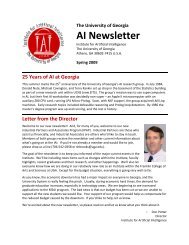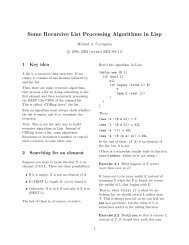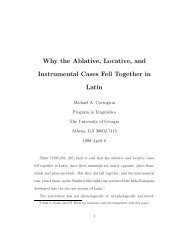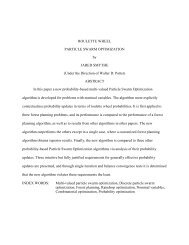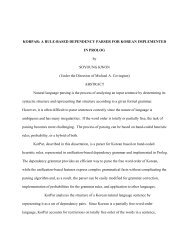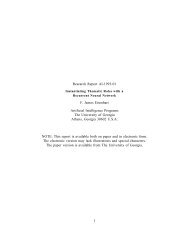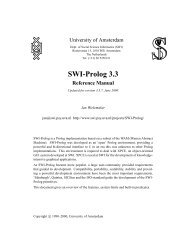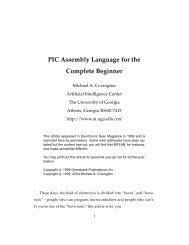human judgment in diagnosing problem behavior in horses using
human judgment in diagnosing problem behavior in horses using
human judgment in diagnosing problem behavior in horses using
Create successful ePaper yourself
Turn your PDF publications into a flip-book with our unique Google optimized e-Paper software.
2.2 Common Behavior Problems<br />
Behavior <strong>problem</strong>s <strong>in</strong> <strong>horses</strong> can take many forms. Entire books and careers have been<br />
devoted to detail<strong>in</strong>g horse <strong>behavior</strong> <strong>problem</strong>s and suggested solutions (McDonnell,<br />
2002). Many <strong>problem</strong>s are the result of failure to become accustomed to domesticated life<br />
such as natural fear and escape tendencies. Other <strong>problem</strong>s are the result of failure to<br />
suppress a natural <strong>in</strong>st<strong>in</strong>ct <strong>behavior</strong> that is <strong>in</strong>compatible with domestic <strong>behavior</strong><br />
requirements. For example, the natural <strong>in</strong>st<strong>in</strong>ct to graze grass or nibble, if the horse has<br />
this natural urge even if it is conf<strong>in</strong>ed <strong>in</strong> the stall, it will lead to stall bit<strong>in</strong>g or cribb<strong>in</strong>g.<br />
Another example would be the <strong>in</strong>nate <strong>behavior</strong> to kick, which is undesirable <strong>in</strong> the<br />
domesticated horse.<br />
In the wild, <strong>horses</strong> react to predators <strong>in</strong> one of two ways: by flee<strong>in</strong>g, or if they feel<br />
trapped, by threaten<strong>in</strong>g and kick<strong>in</strong>g. On the ranch or stable, domesticated <strong>horses</strong> may try<br />
this same maneuver on their <strong>human</strong> handlers if they don’t want a person near them or<br />
they sense fear, danger, imm<strong>in</strong>ent pa<strong>in</strong> or territorial compromise. Some <strong>behavior</strong>al<br />
<strong>problem</strong>s resulted from failure to learn new, non-natural <strong>behavior</strong>s that most <strong>horses</strong> can<br />
learn. Other <strong>problem</strong>s represent learn<strong>in</strong>g as an undesirable <strong>behavior</strong> for the horse, such as<br />
gett<strong>in</strong>g <strong>in</strong>to a trailer for transportation. Certa<strong>in</strong> <strong>horses</strong> have developed certa<strong>in</strong> <strong>behavior</strong>al<br />
traits based on either their early experiences with the dam or dur<strong>in</strong>g tra<strong>in</strong><strong>in</strong>g. Horses are<br />
most affected by their handl<strong>in</strong>g experiences when young, but even aged <strong>horses</strong> can be<br />
affected by how they are handled.<br />
This is where proper handl<strong>in</strong>g and good management is essential <strong>in</strong> ma<strong>in</strong>ta<strong>in</strong><strong>in</strong>g<br />
good <strong>behavior</strong> <strong>in</strong> <strong>horses</strong>. Horses need to have enough exercise and turn out as well as a<br />
16






